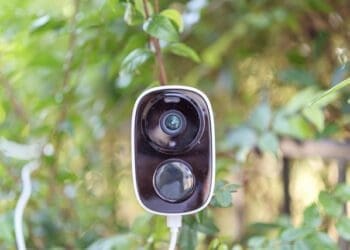Transforming your home into a smart and automated space can be an enticing prospect, but understanding the true home automation cost is crucial before embarking on this journey.
As smart home technology continues to evolve, homeowners are increasingly exploring the benefits of embracing a home automation system tailored to their needs and preferences.
However, the installation cost and total cost of home automation can vary significantly depending on factors such as the size of your home, the features you desire, and the complexity of the system you choose to implement.
This article delves into the various components that contribute to the overall budget for smart homes, providing a comprehensive breakdown to help you make an informed decision.
Understanding Home Automation Costs
Home automation costs can vary significantly depending on several factors.
The size of your home, the specific features and specifications you desire, and the complexity of the system all impact the overall cost.
Upfront costs include the purchase of smart devices and installation fees, while ongoing expenses involve maintenance, energy usage, and potential subscription fees.
If you want to learn more about this topic or other topics…. Click here
Factors Affecting Home Automation Costs
The type of wiring (wireless or hardwired) and protocol (communication standard) influence compatibility and installation costs.
Larger homes generally require more devices and wiring, increasing expenses.
Your chosen features, such as security systems, lighting, entertainment, and appliance automation, also affect the total cost.
Cost Breakdown by Room/Area
Automating specific rooms or areas can provide a clearer cost estimate. For example, a smart security system may cost $500 to $5,000, while automated lighting ranges from $1,000 to $5,000.
A smart entertainment system can cost $2,000 to $4,000, and a fully automated kitchen can exceed $25,000.
Differentiating Upfront and Ongoing Costs
Upfront costs cover the initial purchase and installation of smart devices.
Ongoing costs include maintenance, potential subscription fees, energy consumption, and internet connectivity upgrades.
Professional installation can range from $80 to $200 per hour for wireless systems, while hardwired installations may cost $500 or more.
Planning and Implementing Home Automation
Assessing Your Home Automation Needs
Before embarking on a home automation project, it’s crucial to assess your specific needs and goals.
Consider your lifestyle, daily routines, and the areas where automation could enhance convenience and efficiency. Determine whether you want features like heightened home security, energy savings, or complete surveillance.
Identify the rooms or systems you wish to automate, such as security, entertainment, or thermostats. This initial assessment will guide you in selecting the appropriate home automation system and features.
Choosing the Right Smart Home System
When selecting a home automation system, you have the option of a DIY setup or professional installation.
DIY systems allow for more customization and often involve no contracts or monthly fees, while professional systems offer pre-established kits and seamless integration.
Consider factors like the complexity of your needs, your technical expertise, and your budget.
Another critical decision is choosing a networking protocol, such as Z-Wave, ZigBee, or Wi-Fi, which will determine the compatibility of future devices.
Additionally, evaluate the control options: hardware-based for simple manual controls, software-based for complex needs, or hybrid systems for combining triggers and conditional events.
I am glad you are enjoying this content… I have other articles related to this topic… Click Here
Hiring Professional vs. DIY Installation
Professional installation ensures proper setup, programming, and security of your home automation system, providing peace of mind.
However, it comes at an additional cost. DIY installation can save money but may require more effort and technical knowledge.
Consider your comfort level with technology, the complexity of the system, and the potential for future expansions when deciding between professional or DIY installation.
Enhancing Your Smart Home Experience
Smart products can be remotely managed from your phone even when you’re out of the house, allowing for seamless control and automation.
Products can be programmed to perform actions automatically based on your schedule, send alerts about performance issues, and adjust energy usage based on occupancy detection.
Integrating Voice Control and Smart Assistants
Voice control removes the need for manual switches, remote controls or smartphone apps, enabling hands-free interaction with smart lights, locks, thermostats, cameras and other devices.
Voice assistants like Amazon Alexa, Google Assistant, and Apple’s Siri offer intuitive voice controls and automation capabilities.
With customizable voice apps and programmed routines, basic voice functions can be extended.
Integrating voice control enhances accessibility, usability, and scalability in a growing smart home ecosystem.
Incorporating Energy-Efficient Features
The ENERGY STAR Smart Home Energy Management Systems (SHEMS) program recognizes smart home systems that help simplify, reduce and manage energy consumption.
An ENERGY STAR SHEMS package typically includes a smart thermostat, lighting controls, and plug load monitors/controls, with options to add appliances, EV chargers, and smart security.
Smart thermostats automatically adjust heating and cooling when not needed, providing significant energy savings.
ENERGY STAR certified smart light bulbs and fixtures use90% less energy than in candescents.
Exploring Advanced Home Automation Options
Advanced options include smart security solutions like cameras, doorbells, motion sensors for remote monitoring and alerts.
Smart entertainment systems sync TVs, speakers, and streaming devices for seamless control.
Smart appliances like refrigerators, ovens, and washing machines offer convenience and energy optimization.
Water management systems adjust irrigation and detect leaks.
Personalized automation “scenes” cater to daily routines like waking up or going to bed.
Smart sensors monitor indoor air quality and sleep patterns for a healthier living environment.
Conclusion
Embarking on the home automation journey can be both exciting and daunting.
While the upfront costs and installation fees may seem substantial, the long-term benefits of enhanced convenience, energy efficiency, and security can potentially offset these expenses.
As technology continues to evolve, it is essential to carefully assess your specific needs, budget, and long-term goals to ensure a seamless integration of smart home features into your living space.
Ultimately, the true cost of home automation extends beyond the initial investment.
It encompasses the ongoing maintenance, potential subscription fees, and the willingness to adapt to a technology-driven lifestyle.
By thoroughly evaluating your requirements and exploring the various options available, you can create a tailored smart home experience that aligns with your preferences and budget constraints.
Embracing home automation is a journey, and with careful planning and an open mindset, you can unlock the full potential of this transformative technology.
Don’t wait, other post are waiting for you!!!
FAQs
- What is the typical cost for automating an entire home?
The cost of automating an entire house can vary based on factors such as wiring and protocols. However, the majority of the budget is usually allocated to appliances. Homeowners can generally expect to spend between $2,000 and $4,000 for basic home automation systems. - Is investing in home automation financially beneficial?
Yes, home automation can be cost-effective. It can lead to significant savings over time by reducing energy consumption and automating home security. This can result in lower monthly utility bills and potentially reduced insurance premiums. - Are the benefits of home automation systems worth the investment?
Absolutely, home automation offers numerous advantages such as time savings, cost efficiency, enhanced security, and greater convenience. Despite the initial cost, the investment in home automation is valuable and provides long-term benefits, making it a worthwhile decision. - What are the financial implications of implementing automation systems?
The costs associated with automation systems can vary greatly depending on the number and type of robots or systems required. For instance, a standalone robotic arm may cost around $28,000, whereas a comprehensive industrial automation system could cost several hundred thousand dollars or more.





















































